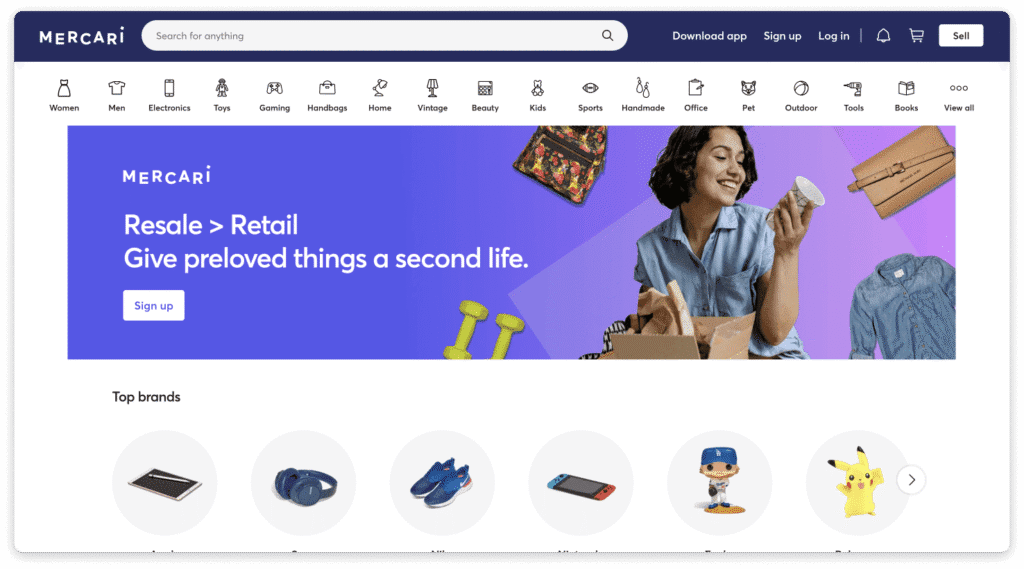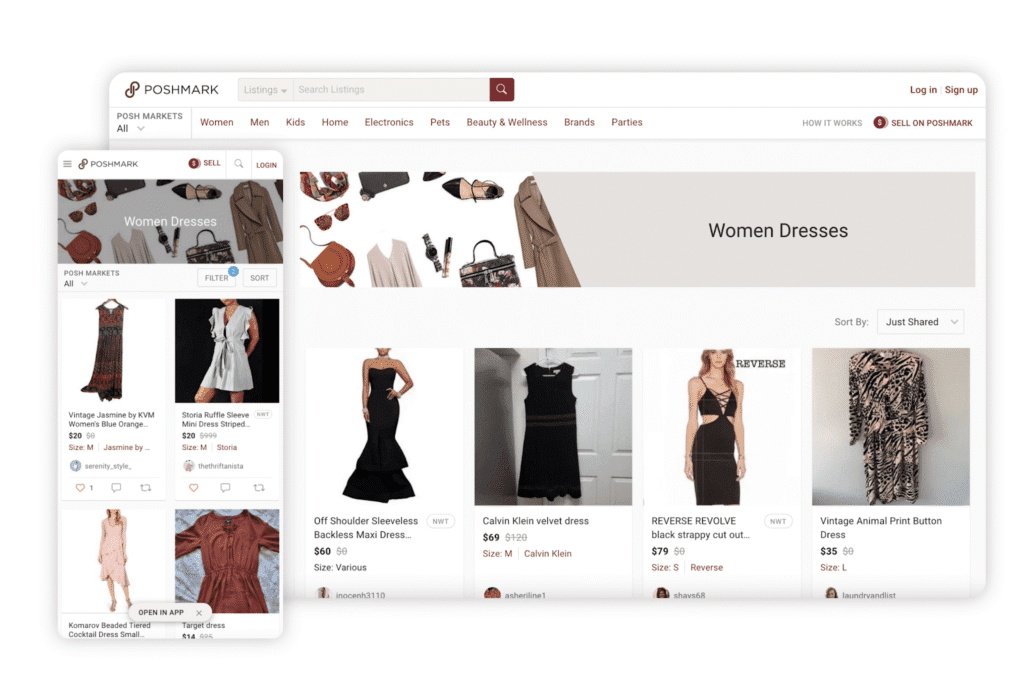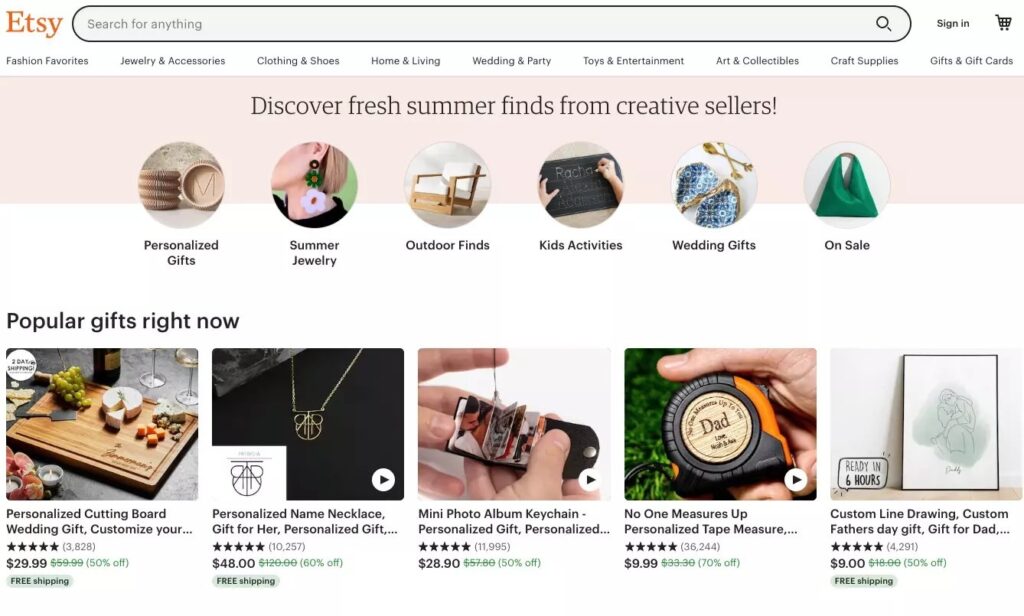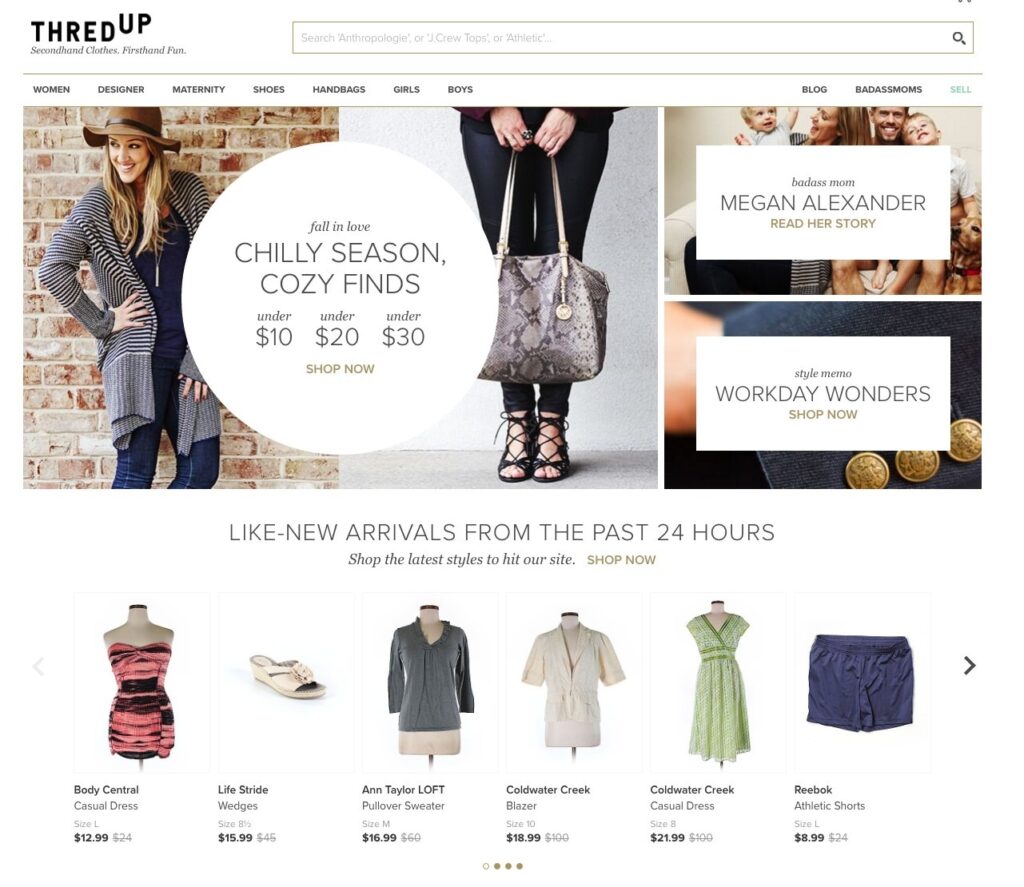You list a couch on Facebook Marketplace. Within an hour, you get 15 messages. Half are “Is this available?” with no follow-up. Three are lowball offers at 30% of your asking price. Two promise to pick up tomorrow but ghost you. One shows up, inspects your item for 20 minutes, then offers half what you agreed on.
Sound familiar?
If you’re dealing with:
- Scammers asking you to ship items before payment or requesting your phone number for “verification codes”
- Buyers who schedule pickups and then never show up (wasting your entire Saturday)
- Lowball offers on items you priced fairly, forcing endless back-and-forth negotiations
- Zero seller protection when buyers claim items are damaged after pickup
You’re not alone. Thousands of sellers abandon Facebook Marketplace every month because the platform prioritizes buyer convenience over seller safety.
The good news? Better alternatives exist. Platforms with verified users, structured fees, actual seller protections, and buyers who show up when they say they will.
This guide shows you 10 Facebook Marketplace alternatives, what each one does best, and how to pick the right platform for what you’re selling.
Need help optimizing your marketplace listings or managing your selling strategy across platforms? Socialander specializes in e-commerce optimization and marketplace management. Book a free consultation.
1. OfferUp: Best for Local Pickups and Casual Furniture Sales
OfferUp is a mobile-first marketplace built for local selling. Perfect for furniture, home goods, and vehicles where buyers want to see items before buying.

Best for: Furniture, home goods, vehicles
Fees and payments:
- Local cash sales: No fees
- Shipped items: 12.9% to 15.4% service fee plus payment processing
- Promoted listings: Start at $1.99 to boost visibility
User base: Over 20 million active users. By 2021, the platform facilitated more than $14 billion in transactions.
Regional availability: United States only. No international shipping. Works best for local or nationwide US sales.
Why it works: OfferUp’s TruYou verification system builds buyer trust. The platform offers over 1,400 community meetup spots (often near police stations or busy public areas) for safe local transactions.
Quick tip: Use TruYou verification and arrange meetups at designated community spots. For large furniture, the local pickup option eliminates shipping headaches while reaching thousands of nearby buyers.
Rating system advantage: In-app messaging and buyer ratings help you vet people before meeting. You can check their profile, see previous transactions, and decline suspicious buyers.
2. Craigslist: Best for Zero-Fee Local Listings for Large Items
Craigslist remains one of the top 20 most-visited websites on the internet. It’s straightforward, widely used, and perfect for items too expensive or bulky to ship.

Best for: Large furniture, appliances, cars, services
Fees: Most listings are free. Small fees only for vehicle listings in some cities and real estate posts.
Regional availability: Operates in over 70 countries, including the US, Canada, the UK, and Australia. Strongest adoption in North America.
Why it works: Complete simplicity. No shipping labels, no buyer protection programs, no platform taking a cut. You keep 100% of what you sell.
Quick tip: Always meet buyers in public places during daylight. Verify cash before handing over items. Never share personal financial information. Use your phone’s location-sharing feature with a trusted friend during meetups.
Best use cases: Dining sets, refrigerators, washers, dryers, or anything that would cost $100+ to ship elsewhere. The platform works when you have large items that buyers need to see in person.
Safety warning: Craigslist offers complete anonymity, which creates both advantages and risks. Never invite buyers to your home. Meet at police stations, busy parking lots, or designated safe trade locations.
3. Mercari: Best for Easy Shipping of Small Items
Mercari handles shipping labels, tracking, and payment processing. You can list and ship without visiting the post office.

Best for: Clothing, small electronics, toys, collectibles
Fees: 10% selling fee plus payment processing costs
Regional availability: US and Japan only. No international shipping.
Why it works: Prepaid shipping labels save time and provide tracking on every order. The app makes listing fast with barcode scanning for many products. Unlike local-only platforms, Mercari lets you reach buyers nationwide.
Quick tip: Build the 10% fee into your asking price from the start. Price items at 50-70% of the original retail price, adjusting based on condition.
Shipping advantage: Buyers know they’re covered by purchase protection. This reduces disputes and chargebacks compared to platforms without buyer guarantees.
Best for niche items: If you’re selling collectibles or specialty items that won’t sell quickly locally, Mercari’s nationwide reach finds buyers willing to pay fair prices.
4. Poshmark: Best for Brand-Name Fashion and a Social Closet
Poshmark turns selling clothes into a social experience. It’s built for fashion sellers targeting style-conscious buyers hunting deals on name brands.

Best for: Brand-name clothing, shoes, bags
Fees:
- Sales under $15: $2.95 flat fee
- Sales $15 and above: 20% commission
User base: Over 80 million registered users
Why it works: Poshmark’s “Posh Parties” (themed virtual selling events) help your items get seen by thousands of targeted buyers at once. The fashion-focused audience means better prices for name brands than general marketplaces.
Quick tip: Share your listings multiple times daily. Include exact measurements and use clear photos with good lighting. On-body shots or styled flat lays perform significantly better than hanger photos.
Workflow tip: Many successful sellers cross-post items on multiple platforms using tools like Crosslist or List Perfectly. This lets you manage inventory across Poshmark, Mercari, and eBay from one dashboard.
Community advantage: Successful Poshmark sellers share tips in Facebook groups and run promotions through Facebook Pages to drive traffic to their closets. This cross-platform strategy boosts sales during peak shopping seasons.
Shipping included: Poshmark provides prepaid shipping labels for all sales. You print, pack, and drop off. Buyers pay a flat shipping fee regardless of package weight (up to 5 lbs).
5. Depop: Best for Gen-Z, Vintage, and Streetwear Aesthetics
Depop is where younger buyers shop for unique, vintage, and reworked fashion. If your items have a vintage or trendy aesthetic, Depop’s visual layout helps them shine.

Best for: Y2K fashion, vintage pieces, reworked streetwear
Fees: Depop introduced a seller and buyer fee split in 2024. Both parties pay a percentage, which reduces the seller’s burden but requires clear communication about final prices.
Why it works: Depop’s visually engaging format lets you showcase products in a way that resonates with style-conscious buyers. Think Instagram aesthetic: natural lighting, clean backgrounds, lifestyle shots.
Quick tip: Invest time in strong photography. Include on-body shots, which significantly increase sales. Post new items regularly, engage with comments, and follow other sellers in your niche. The algorithm favors active accounts.
Seller strategy: Daily activity boosts visibility. Even refreshing old listings or responding to questions helps. Consistency matters more than volume.
Promote your shop: Many Depop sellers use Facebook Ads to reach fashion-forward buyers during peak shopping seasons like back-to-school or festival season. Small ad budgets generate significant returns when targeting the right demographics.
6. eBay: Best for Auctions, Collectibles, and International Buyers
eBay has approximately 134 million active buyers and 20 million sellers, with roughly 2.3 billion active listings. Its auction format and global reach make it perfect for rare items that won’t sell locally.

Best for: Collectibles, branded electronics, niche items with international demand, vintage goods
Fees:
- First 250 listings per month: Free
- Additional listings: $0.35 each
- Final value fee: 2.5% to 15% plus $0.30 to $0.40 per order (varies by category)
Why it works: Unlike most Facebook Marketplace alternatives, eBay connects you with international buyers. Invaluable for niche collectibles, rare books, or specialty items with limited local demand but passionate collectors worldwide.
Quick tip: Use detailed item specifics in your listings. eBay’s search algorithm heavily weighs these fields. Offer tracked shipping with delivery confirmation. Build positive seller ratings for better visibility in search results.
Auction vs fixed-price: Start with auctions for rare items to test market demand. Switch to fixed-price listings once you understand what buyers will pay.
International advantage: eBay’s Global Shipping Program handles international logistics, removing the complexity of customs forms and international postage.
Cross-posting strategy: Serious eBay sellers maintain a Facebook Business Page to announce new listings and connect with repeat customers. Use Facebook Marketplace strategically for local pickup items while saving shipped items for eBay.
7. Etsy: Best for Handmade and Vintage Goods
Etsy is the premier marketplace for handmade items, craft supplies, and vintage goods. If you’re a maker, crafter, or vintage curator, Etsy connects you with buyers specifically searching for unique, one-of-a-kind items.

Best for: Handmade items, craft supplies, vintage goods (20+ years old)
Fees:
- Listing fee: $0.20 per listing (active for 4 months or until sold)
- Transaction fee: 6.5% of sale price
- Payment processing: 3% plus $0.25 per transaction
Why it works: Unlike Facebook Marketplace, where buyers hunt for bargains, Etsy shoppers understand that handmade and vintage items carry higher value. They’re willing to pay premium prices for quality craftsmanship.
Quick tip: Optimize listing titles for Etsy’s search algorithm with specific keywords buyers actually search. “Boho macrame wall hanging” performs better than “beautiful handmade decor.” Use clear shop policies spelling out processing times, shipping expectations, and return options.
Vintage sellers: Etsy’s vintage category requires items to be at least 20 years old. This strict definition protects marketplace integrity. If you source estate sales, thrift stores, or antique shops, Etsy provides a ready-made audience of vintage enthusiasts.
Shop setup strategy: Treat your Etsy shop like a real business. Use consistent product photography with neutral backgrounds. Write compelling product descriptions that tell a story. Maintain regular shop activity. Etsy’s algorithm favors shops that list new items regularly and respond quickly to messages.
Review system: Positive reviews translate directly to increased sales. The platform’s review system helps build credibility faster than anonymous marketplaces.
8. Nextdoor: Best for Hyperlocal Community Sales
Nextdoor connects you with verified neighbors in your immediate community. This hyperlocal approach creates higher trust levels and makes selling bulky items incredibly convenient.

Best for: Local pickup items, neighbor sales, bulky furniture and appliances
Fees: Free for all listings. Nextdoor makes money through local business advertising, not seller fees.
Why it works: Nextdoor verifies addresses, so you’re selling to real people in your immediate area, often within a few blocks. This dramatically reduces no-shows compared to Facebook Marketplace.
Quick tip: Trust is naturally higher when selling to neighbors, but still meet in public spaces or well-lit areas. Many users feel comfortable with porch pickups or driveway sales since buyers are verified community members.
The neighborhood advantage: Buyers can pick up within hours rather than days. Heavy items like refrigerators or sectional sofas become viable sales since buyers are nearby.
Community reputation matters: Your Nextdoor profile is tied to your actual address and real identity. This incentivizes professional behavior. Bad behavior (lowballing, no-shows, misrepresenting items) damages your reputation within the community.
Best use cases: Items too heavy to ship and too large for standard cars. Sectional sofas, washer/dryer sets, outdoor furniture, fitness equipment. Also perfect for moving sales when you need to sell everything quickly.
Limitation: Your audience is limited to your immediate neighborhood (a few hundred to a few thousand households). For niche items needing broader audience, combine Nextdoor with shipping-friendly platforms like eBay or Mercari.
9. Vinted: Best When You Want Low Seller Fees (Region Dependent)
Vinted disrupted the resale market by shifting fees from sellers to buyers, allowing sellers to keep more money from each sale. However, availability and fee structure vary significantly by region.

Best for: Clothing resale in regions where Vinted has strong adoption (primarily Europe)
Fees: Vinted charges buyers a “Buyer Protection Fee” instead of charging sellers commission in many markets. Sellers list for free and keep their full asking price when items sell. Regional variations exist, so verify current fees for your country.
Regional availability: Strongest in Europe (UK, France, Germany, Spain, Poland). Expanded to US and Canada. Platform adoption varies by country. Check whether Vinted is popular in your area before investing time.
Quick tip: Price items competitively since buyers pay additional fees on top of your asking price. If you list a shirt for €20, buyers might pay €22-24 total after fees. Clear photos showing any flaws and accurate size information reduce return requests.
Platform culture: Vinted buyers expect reasonable prices and quick shipping. The platform attracts deal-hunters rather than luxury shoppers. Works best for everyday brands and fast fashion. Save luxury items for Poshmark or eBay.
10. ThredUp: Best for Bulk Clothing Cleanouts Without Listing Work
ThredUp operates differently than peer-to-peer marketplaces. You send them your clothes, they process and list everything, and you receive payment when items sell. Hands-off approach for sellers who value convenience over maximum profit.

Best for: Bulk clothing, shoes, and accessories cleanouts; sellers who don’t want to photograph or list individual items
Fees: ThredUp keeps 60-90% of sale proceeds, depending on the item brand and value. You receive 10-40% payout. Higher-end brands earn higher payout percentages.
How it works: Order a free Clean Out Kit (they ship you a bag with a prepaid return label). Fill it with clothes in good condition and send it back. ThredUp inspects, photographs, lists, prices, ships, and handles customer service. You choose to have unsold items returned, recycled, or donated.
Who this works for: ThredUp makes sense when clearing out closets, and you don’t want the hassle of individual listings. If you have 50 items to sell and a limited time, receiving $100 from ThredUp (with zero effort) beats the theoretical $300 you might make listing everything yourself.
Payout expectations: Be realistic about earnings. ThredUp accepts only items in excellent condition from marketable brands. Many items may be recycled or donated rather than sold. However, you earn passive income with zero work after dropping off the bag.
Strategic use: Many sellers use ThredUp for mid-tier brands and everyday clothes, while listing designer pieces individually on Poshmark or eBay. This hybrid approach maximizes earnings on valuable items while quickly clearing out everything else.
How to Choose the Right Platform
Picking the right selling platform saves time and maximizes profit. Here’s how to choose:
1. Match your item type to platform strength
Each marketplace serves a unique buyer base:
- OfferUp and Craigslist: Bulky items like furniture or cars needing local pickup
- Poshmark, Depop, and Mercari: Fashion, vintage, or lightweight items that ship easily
- eBay: Collectibles, electronics, international sales
- Etsy: Handmade or vintage goods (20+ years old)
- Nextdoor: Heavy items for immediate neighbors
If you’re selling multiple categories, diversify but start with one or two platforms where your core items fit naturally.
2. Compare fees and calculate true profit
Platform fees directly impact take-home profit. A platform offering free listings may still charge high final sale fees or payment processing charges.
Before listing, calculate:
Selling price – (Platform fees + Shipping costs + Packaging) = Real profit
Understanding this early prevents underpricing and ensures your pricing reflects actual gain.
3. Consider audience and regional availability
The best platform is useless if buyers in your area don’t use it. Check each platform’s active user base and regional coverage before investing time.
Safety and Payment Tips Across All Platforms
Regardless of platform, follow these safety guidelines:
For local meetups:
- Meet during daylight hours in public, busy locations
- Bring a friend or let someone know your location
- Many police departments offer designated “Safe Trade” parking spots
- Never invite strangers to your home or go to theirs
- Count cash carefully before handing over items
- Trust your instincts—if something feels off, cancel the meetup
For shipped items:
- Always use tracked shipping with delivery confirmation
- Photograph items before packaging and save photos of the packaged item
- Keep all shipping receipts and tracking numbers
- Use platform-provided labels when available for automatic tracking integration
- Never ship items before payment clears
- For high-value items, require signature confirmation
Payment safety:
- Use in-app payment systems when available for buyer and seller protection
- For local sales, cash is safest; never accept checks from strangers
- Be wary of buyers asking to use payment apps outside the platform
- Never accept overpayment with requests to refund the difference (classic scam)
- Document all transactions with screenshots
Conclusion
The best Facebook Marketplace alternative is the one that actually sells your stuff without wasting your weekends on no-shows and lowball offers.
Pick a platform that matches what you’re selling. List your items with clear photos and honest descriptions. Measure what works and what doesn’t. Commit to platforms that deliver real sales. Need expert help setting up your social commerce strategy or improving marketplace conversions? Book a free consultation with Socialander and sell with strategy, not stress.





